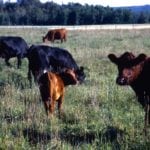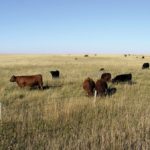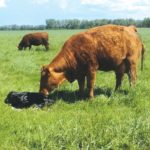
Blackleg: A pasture nemesis
Vet Advice with Dr. Ron Clarke

A vaccine that saved the cattle industry
Vet Advice with Dr. Ron Clarke

Fake News: A chance to learn about forbidden places
Vet Advice with Dr. Ron Clarke

Livestock industry faces trouble ahead from vitamin shortage
Health: News Roundup from the May 2018 issue of Canadian Cattlemen

Public trust is a ticket forward for the food industry
Vet Advice with Dr. Ron Clarke

Good grazing means manage for what you want
Soil and grass health is vital to achieve sustainability in our cattle industry

Preventing reproductive wrecks in cow-calf operations
Breeding: There are four important management practices to improve reproductive efficiency

Vet Advice: New regs to preserve old and new drugs

Lapses in biosecurity create long-standing risks
Reducing risk of transmission of salmonella and other diseases

Cold and abomasal impaction
Vet Advice with Dr. Ron Clarke



